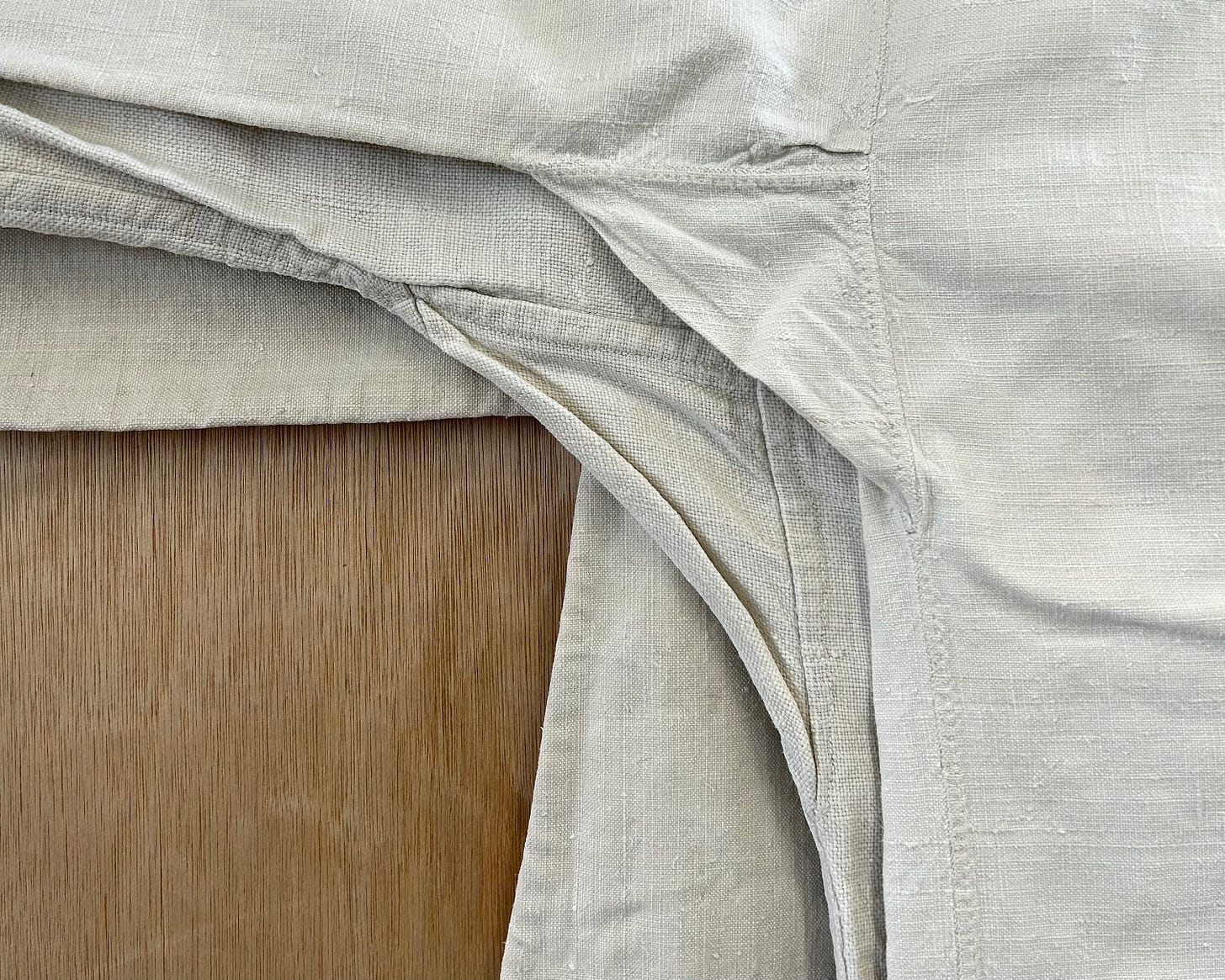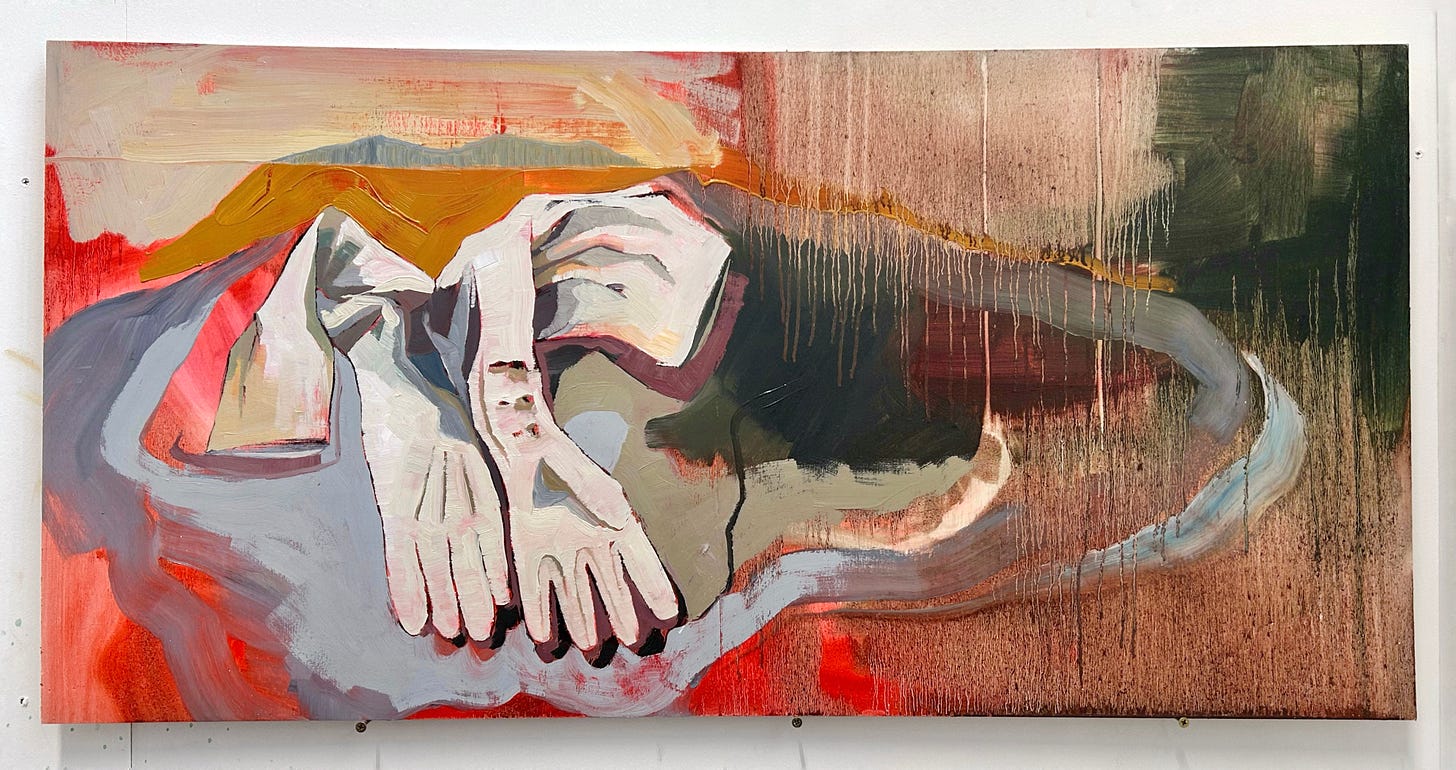Lightning and My Cloud
Interests in lightning and the partially articulated
I’ve had a fascination with thunder and lightning for a while: A connection from above to below, a source through the sky, a route. Rapid movement. On my 19th birthday, I went for a walk over the fields. It was misty when we left the house, but by about 20 minutes into the walk, the weather had turned stormy – heavy hail and lightning that felt immediately nearby. It was the first time I’d felt the potential danger of a storm, and we left to run home.
Lightning makes me think about verticality, the parallel, conducting from the sky like a puppet master’s strings, and visible plumb lines in drawings and paintings. I imagine suspensions through the sky, secrets and knowledge layered and stacked vertically through time and space. Things that aren’t visible but that move upwards and downwards, and perhaps disappear into the ground. Alongside my interest in lightning, this past year, especially, I’ve found myself attracted to bodies of water. I’m not very water-inclined as a person, but I often find I can’t look away. There’s something about the idea of being submerged in water and therefore suspended, but that without that actually happening to me, my mind is left in this state of imagining and filling in, or jumping over, the gaps in what that would feel like.
Thunder is compression and expansion. There’s a delay from the strike, a cutting through air that moves both quickly and slowly towards me. Negative charges in clouds, things that are bigger than me, weather systems and floods, and rapid discharge. Intracloud lightning (sheet lightning) and folded linen sheets. Smocked gathers, embroidery on the edge of a linen dress. I can’t believe that lightning is real. I feel it in my chest, and these things move in parallel.
Over a year on from that stormy birthday walk, I read this passage by Patti Smith:
“Another restless night. I got up at dawn and worked, my eyes burned from deciphering scribbled envelopes, endpapers, and stained napkins, then transcribing the text to the computer with everything out of order, then trying to make sense of a subjective narrative with an asymmetrical timeline. I left the lot of it on my bed and went to Caffè Dante. I let my coffee run cold and thought about detectives. Partners depend on one another's eyes. The one says, tell me what you see. His partner must speak assuredly, not leaving anything out. But a writer has no partner. He has to step back and ask himself – tell me what you see. But since he is telling himself he doesn't have to be perfectly clear, because something inside holds any given missing part – the unclear or partially articulated.”
M Train, page 211
I feel like so much of my practice this year has involved me jumping between having what feels like a clear understanding of what my work is about and feeling like I wouldn’t be able to articulate it. I feel immersed in images and phrases that feel important and connected. Dreams and lines of thought. They all feel tied together, and when I’m not questioning it too much it makes sense to me why these are the things in my head, each acting as a particle that makes up my cloud, and my experience of Oxford. At other times, I can’t say what my work is about because I don’t fully understand the greater meaning of all of this, but I know in my heart that it’s important.
I realise that trying to explain this in words is futile in that it’s essentially an attempt to replace the work I’m making; If I knew how to articulate it, I wouldn’t need to paint it. I wouldn’t need to be working my way through these ideas with mark-making and imagery. The paint itself makes up part of a language that holds, as Patti says, the ‘missing part – the unclear or partially articulated.’ I love the parts of my paintings where communication is lost, where marks become fragmentary, and the paint takes over and weather systems emerge from the solvent or oil and pigment separating.
These things that are in my head are particulate, effervescent and gaseous in their individual natures, but they come together as a cloud, a three-dimensional and borderless unit, where movement is within and out again. Sometimes, I find lines of current to the ground that make sense, like lightning, and sometimes I find sudden intracloud connections. Otherwise, I’m happy to exist within my cloud, and I think that’s part of what I’d like to share: This feeling of being within something, and not quite knowing what it is or how you are part of it. Being somewhere between ideas and the medium, jumping the parts we don’t yet understand. It’s a difficult space to explain and that makes it fragile, but I do think it’s a space with a lot of potential.








I loved the analogy of the lightning and the cloud. I think the opening up, individually, to the things which feed our awe and curiosity, are our tiny anchors aren’t they - the shiny, safe things we hold on to while we discover the rest…the murky bits in between or the bigger picture. We are meaning-making creatures - we can do that through head or through the act of making. Through our head ( thinking) might seem somehow quicker - and is definitely more in tune with our time. But finding meaning through the act of making - letting the bits in between the anchors emerge as new and personal, material language, is the act of faith that is open to us as creative humans. And there’s no rush “to know”. I really believe that our societies rush to get to “the knowledge” ( the end point) is not particularly aligned with our evolutionary wiring which is to sense and explore. I think for this reason ( and for the reasons you so eloquently express), artists are such brave people ( and I use the word “artist” to mean anyone who takes this way of being on).
I feel you have described how it feels to be ‘alive’ really well in that final paragraph. Life has the potential of a blank canvas and the process of living and painting is laced with repeated moments of fragility and uncertainty. Often, we float along in our own cloud of security, but It’s the external points of pressure, the interruption and often the disruption puncturing it that enable awareness and excitement to fully ignite. Thank-you for lending me your excellent metaphor and please keep both writing and painting, as I love them both.